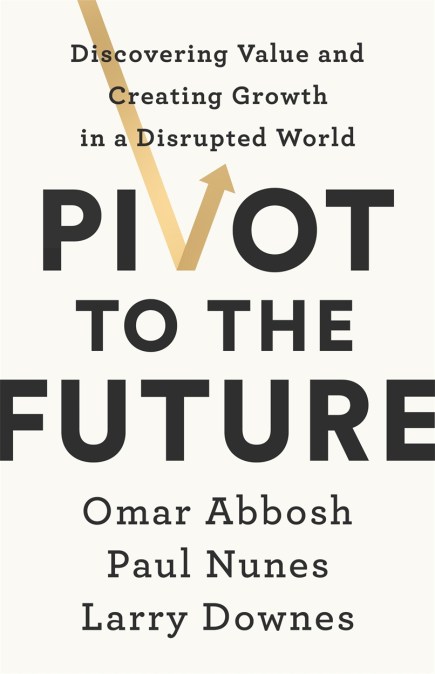Disruption by digital technologies? That’s not a new story. But what is new is the “wise pivot,” a replicable strategy for harnessing disruption to survive, grow, and be relevant to the future. It’s a strategy for perpetual reinvention across the old, now, and new elements of any business.
Rapid recent advances in technology are forcing leaders in every business to rethink long-held beliefs about how to adapt to emerging technologies and new markets. What has become abundantly clear: in the digital age, conventional wisdom about business transformation no longer works, if it ever did.
Based on Accenture’s own experience of reinventing itself in the face of disruption, the company’s real world client work, and a rigorous two-year study of thousands of businesses across 30 industries, Pivot to the Future reveals methodical and bold moves for finding and releasing new sources of trapped value-unlocked by bridging the gap between what is technologically possible and how technologies are being used. The freed value enables companies to simultaneously reinvent their legacy, and current and new businesses.
Pivot to the Future is for leaders who seek to turn the existential threats of today and tomorrow into sustainable growth, with the courage to understand that a wise pivot strategy is not a one-time event, but a commitment to a future of perpetual reinvention, where one pivot is followed by the next and the next.
Rapid recent advances in technology are forcing leaders in every business to rethink long-held beliefs about how to adapt to emerging technologies and new markets. What has become abundantly clear: in the digital age, conventional wisdom about business transformation no longer works, if it ever did.
Based on Accenture’s own experience of reinventing itself in the face of disruption, the company’s real world client work, and a rigorous two-year study of thousands of businesses across 30 industries, Pivot to the Future reveals methodical and bold moves for finding and releasing new sources of trapped value-unlocked by bridging the gap between what is technologically possible and how technologies are being used. The freed value enables companies to simultaneously reinvent their legacy, and current and new businesses.
Pivot to the Future is for leaders who seek to turn the existential threats of today and tomorrow into sustainable growth, with the courage to understand that a wise pivot strategy is not a one-time event, but a commitment to a future of perpetual reinvention, where one pivot is followed by the next and the next.
Newsletter Signup
By clicking ‘Sign Up,’ I acknowledge that I have read and agree to Hachette Book Group’s Privacy Policy and Terms of Use
Reviews
Omar and the team have written a wonderful book that outlines what it takes to succeed in a world changed-and super-charged-by technology-based disruption.
Omar and his colleagues provide practical information and real-world examples that will be useful to companies looking to embrace change and adopt strategies and technologies to keep reinventing and iterating their customer experiences.
Abbosh and his coauthors make a powerful case that successful innovation is a long-term game that requires constant pivots to evolve and change.
Provides powerful and stimulating concepts, ideas, and examples. . . . A must-read for anyone who is looking for help on the journey!!
An invaluable testimony on how Accenture very successfully transformed and adapted. . . . A well-structured guide on how to 'wisely' pivot a business towards new opportunities in the digital age, and definitely a must read.
A powerful framework that can shape top leadership teams' decisions around digital strategies and new operating models.
I like the strategies I'm seeing here for unlocking trapped value and simultaneously reinventing legacy, current, and new areas of a business. I think they could go a long way in helping us-and other companies-get there.
A much needed perspective that reinvents tired and outdated concepts of strategy . . . Instead of theorizing, it draws on a real-world journey to figure all this out.
Helps decision makers break free from traditional, linear thinking and immediate concerns . . . by leveraging disruption rather than fearing it.

